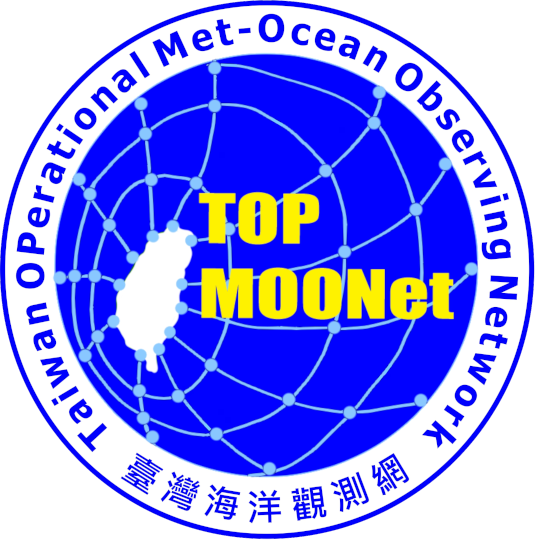
Chief Scientist
Ming-Huei Chang
Plan
In comparison with the ship-based observation, the underwater glider observation is a cost-effective way for several months and broader range continuous sampling and can transmit data near real-time (Fig. 1 and see Supplementary). Two examples of glider observations are shown in Fig. 2. A Seaglider augmented the Ocean Station Papa (OSP; 508N, 1458W) surface moorings, measuring spatial structure on scales relevant to the monthly evolution of the moored time series (Pelland et al., 2016). The glider made biweekly 50 km × 50 km surveys in a bowtie-shaped survey track. The regional hydrographic properties and geostrophic currents were successfully interpreted. Long-term along- and cross-stream surveys of hydrography in the Kuroshio were made by thirteen glider deployments (Rudnick et al., 2011) from April 2007 to July 2008. In total, these deployments produced over 5000 dives to ~1000 m depth, covering more than 20,000 km length in over 1,000 glider days. Most importantly, the cost for the glider observation is reasonable compared to ship time costs. For instance, the ship fare for R/V NOR1 is TWD 650,000 (USD ~21,000) per day. The budget for a 10-days R/V NOR1 ship time is close to the price of a Seaglider. Roughly estimated, the 1000-day hydrographic surveys using a Seaglider cost ~6.5 hundred million if the similar surveys were performed using research vessel. Clearly, the utilization of AUV technology does fill the gaps of the present observing systems (R/Vs, moorings, floats, and satellite) and will elevate us to a new level in integrated ocean observation.
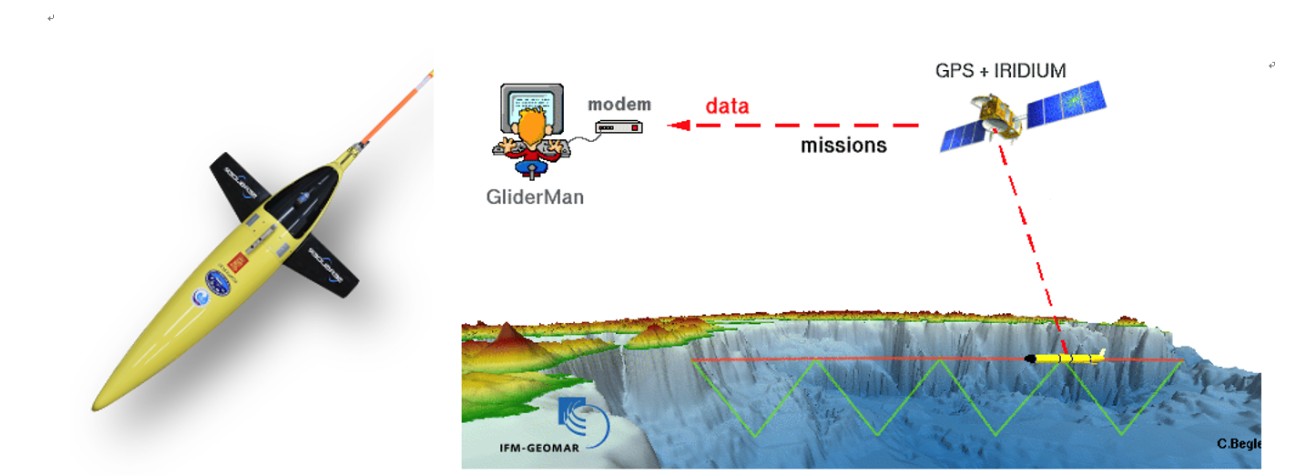
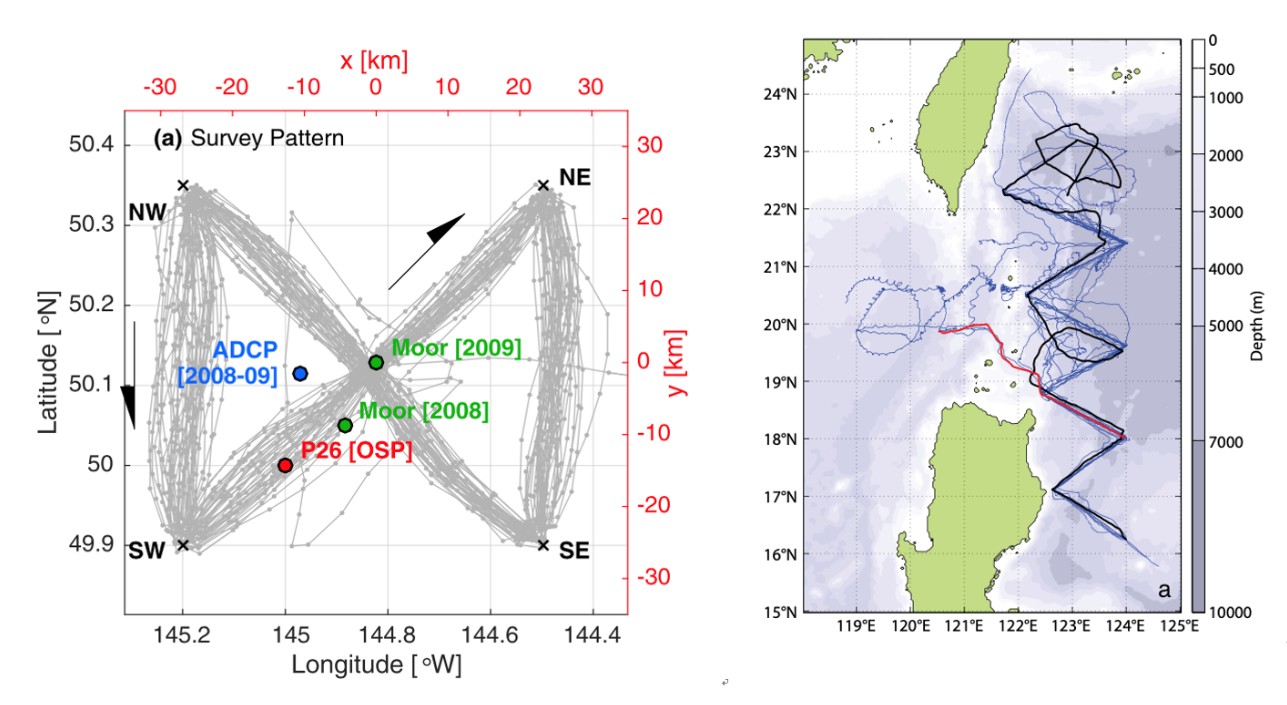
TOPMOON will collaborate with the Marine Instrument Center (MIC) that started to operate Seaglider since 2016. The MIC Glider Team has been skilled with field work (Fig. 3) and maintenance of the Seaglider. Profs. Sen Jan and Ming-Huei Chang are the core members of MIC Glider Team. In collaboration with the Ocean Data Bank technicians, the Glider Team has built a command and data acquisition station based on Linux OS. Effort is also put into developing the navigation and display systems (Fig. 3). Two gliders, serial no. SG628 and SG648, are routinely operated. To date, 11 missions (1-3 months for each mission) were performed off the east coast of Taiwan, in the South China Sea, or around the Luzon Strait (orange lines in Fig. 4). They performed 2263 dives and navigated horizontally 11,000 km. Another two gliders purchased in recent two years are in preparation to take part in the mission. One of them is equipped with microstructure sensors (shear probes and FP07). The collected data reveal some important features and phenomena that have rarely been addressed before off eastern Taiwan. For example, high-resolution hydrographic data set helped the research team find dramatic interleaving layers beneath the Kuroshio’s primary velocity core (Jan et al., 2019). Two dissimilar water masses that encountered in the Kuroshio between 500 and 800 m did not blend together quickly; instead, initial disturbances in their interfaces generated intrusions of the two water masses to each other through a double-diffusive process, forming interleaving layers (salinity profiles in Fig. 5). Each interleaving layer ranges from 10 to 100 km long with a thickness of about 50 m. In addition, complex water mass mixing in Kuroshio has drawn scientists’ attention. A mission carried out by SG648 from Nov. 2018 to Jan. 2019 across Kuroshio main stream and eddy revealed significant diversity of water masses (Fig. 6). The water masses evolved with the Kuroshio comprise North Pacific Water, Philippine Sea Water and South China Sea Water (left panel). In these observations, Philippine Sea Water appears to be the main source (right panel). The variability of Kuroshio water with influences from the impinging eddies is an important scientific topic but remain to be addressed.
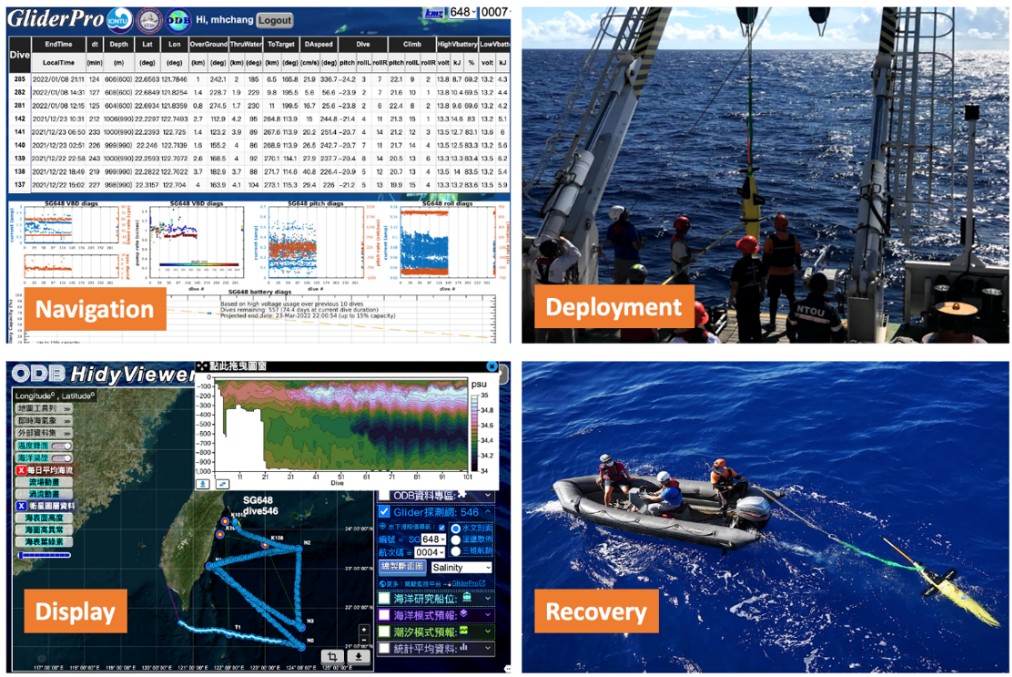
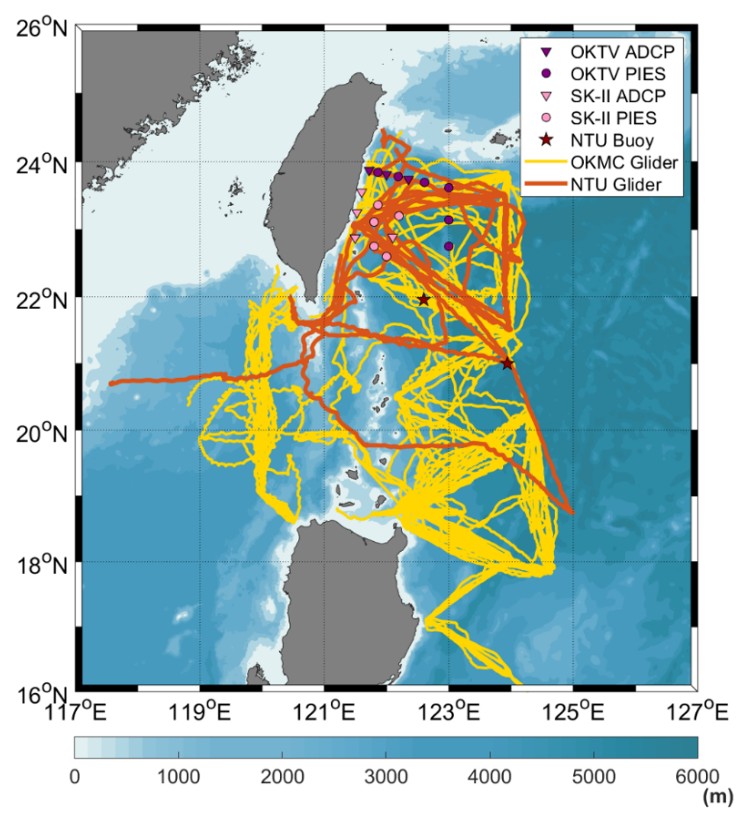
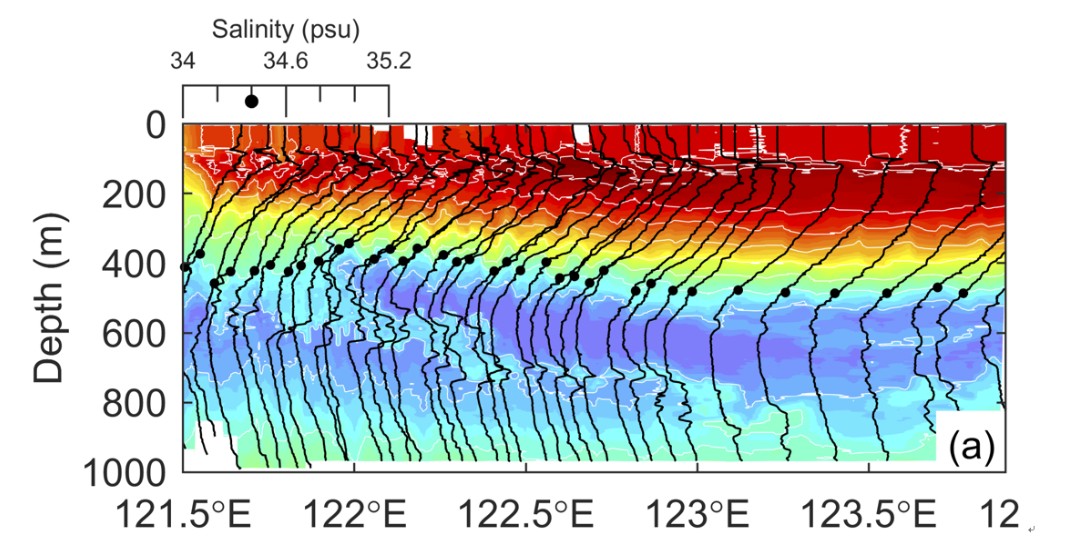
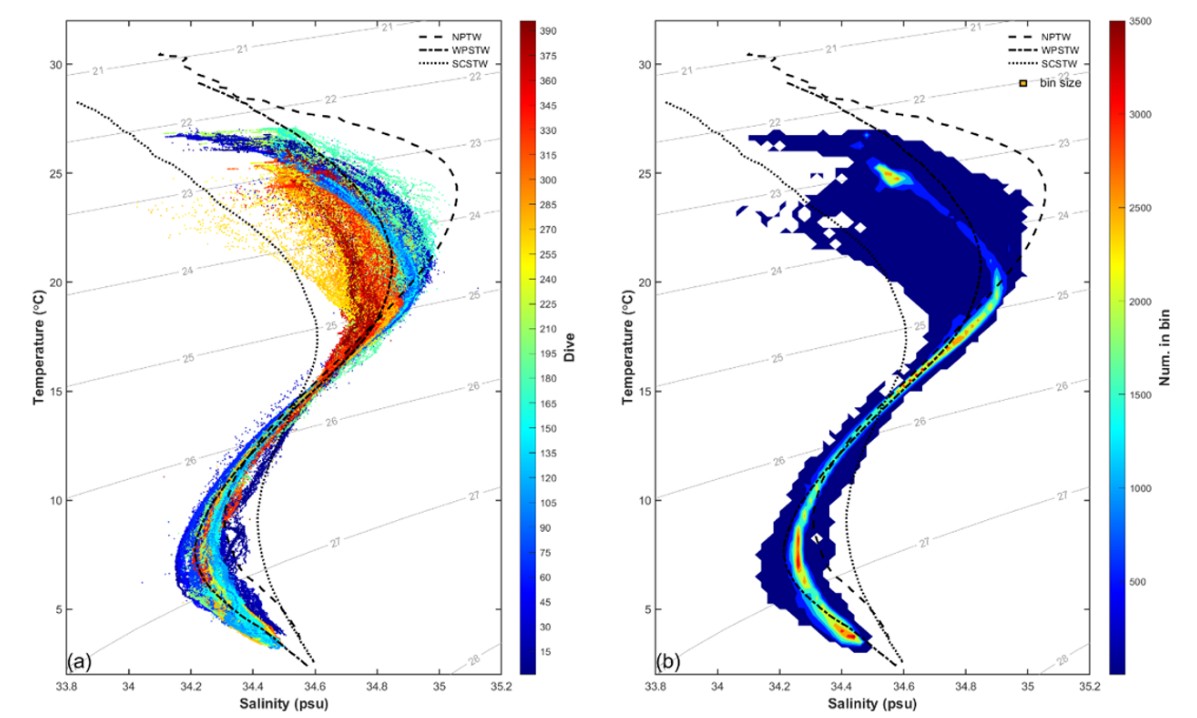
Goals
The primary task of this sub-project is to strengthen the infrastructure for near-real-time and feasible ocean monitoring and for intensive and long-term physical process studies. The glider and buoy technology clearly fit the needs as elaborated above. Based on the effort over the past 5 years, below are our annual plan to enhance the glider operation:
- Year 1 :
- Strengthening of the operational ability of Seaglider with the procurement of one Seaglider incorporating to the MIC glider fleet.
- Year 2 :
- To comprehensively update and extend the navigation and display systems.
- Year 3 :
- To augment training of field work and basic maintenances via international collaboration BOON keeping a sustained glider survey line across the Kuroshio from nearshore to 300 km off southeastern coast of Taiwan (Seaglider track in Fig. 1).
- Year 4 :
- Extension of glider capacity - To develop microstructure measurement and data processing based on the glider platform and to incorporate the turbulent parameter into the display system.
